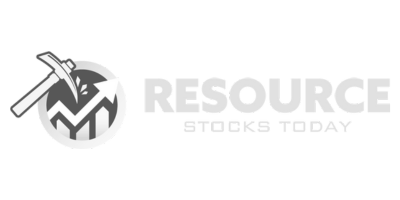
Market summary
The major U.S. indexes finished the session with gains as traders absorbed President Trump’s latest tariff announcements without the panic that marked earlier rounds. The S&P 500 closed up 0.6 percent while the Dow, Nasdaq and Russell 2000 also moved higher on the first trading day after the policy reveal. The market reaction reinforced a growing consensus among investors that fresh tariff measures may be less market moving than in previous episodes.
Tariff details and market reaction
The White House unveiled a package that includes 30 to 50 percent duties on certain furniture items including kitchen cabinets and upholstered pieces, a 25 percent tariff on heavy trucks, and a 100 percent tariff on imported pharmaceuticals that come from manufacturers not building plants in the United States. Traders parsed the details and then largely shrugged, with commentary from market strategists suggesting that the measures are being seen as manageable rather than catastrophic.
Bespoke Investment Group captured the market mood by noting that equity and bond markets are treating the new tariffs as largely irrelevant to the broader outlook. Stock moves in vulnerable subsectors reinforced that view. Wayfair initially fell on the news but closed the day up 1.6 percent. Luxury home retailer RH fell 4.2 percent after the announcement, reflecting its prior sensitivity to furniture duties, yet its shares remain materially higher than they were earlier in the summer. In the truck space, Daimler Truck, which imports heavy-duty models needed for U.S. sales, closed down only 1.8 percent. Paccar, which produces most of its trucks onshore, jumped 5.2 percent as investors rewarded domestic production exposure.
The contrast with earlier market behavior was clear. When the first round of tariffs landed in the spring, broad selling followed. Since then stocks have recovered substantially, and today’s session underscored how much investor sentiment has adjusted to recurring trade headlines.
Who pays for higher duties
Market participants and corporate leaders are still sorting out who will ultimately absorb tariff related cost increases. Terry Sandven, chief equity strategist at U.S. Bank Asset Management, described mitigation efforts as works in progress and highlighted a central question for companies and consumers. Ultimately the economic burden could be borne by suppliers through squeezed margins, by manufacturers incurring higher input costs, or by consumers facing higher retail prices. How that allocation plays out will determine earnings resilience in affected sectors.
Corporate developments and sector movers
Beyond the tariff headlines, several corporate stories shaped trading. Crocs gained 6.6 percent after launching a new advertising campaign for its HeyDude brand that features actress Sydney Sweeney. The move helped lift investor confidence, illustrating how focused marketing initiatives can translate into a tangible stock reaction on the margin.
In tech and services, a stark message from the consulting world grabbed headlines. Accenture’s chief executive warned during the company’s earnings call that reskilling on the timeline required for AI adoption is not a viable path for many roles. The company said it will cut staff members who fail to adapt to the rapid pace of AI driven change. That declaration signals a potential acceleration in workforce reallocation across firms relying on large consulting and professional services partners. For investors this raises questions about near term cost structures for employers and the changing composition of labor expenses across industries.
Automotive safety and regulatory news also entered the tape. BMW issued a recall affecting nearly 200,000 vehicles over an engine fire risk tied to a starter relay defect that can cause corrosion and overheating. Owners were advised to park affected cars outside until repairs are completed. Recalls of this size can pressure supplier margins and create short term uncertainty in the parts and service supply chain.
In the social media and technology transaction space, reports indicated that ByteDance is likely to keep roughly half of the profit from any sale of TikTok’s U.S. operations to American investors. That arrangement will matter for bidders evaluating the economics of a transaction and for the broader outlook for cross border technology deals.
Housing market data also contributed to investor thinking. Profit margins on house flipping have fallen to their lowest level since 2008. The primary driver is elevated initial purchase prices, which compress the upside for short term renovators. For financial markets this development speaks to the cooling of one slice of housing activity and may influence related equities from building products suppliers to regional banks exposed to construction lending.
Context and implications
Today’s session reflected a market that has internalized recurring policy shocks and is now parsing the winners and losers at a company level rather than reacting broadly to headlines. Firms with domestic production or distribution footprints benefited. Companies more reliant on imports or on thin margins in affected categories saw selective pressure. The pharmaceutical sector will be closely watched for announcements about domestic plant investments that could alter import exposure and future cost structures if the 100 percent tariff proposal is enacted or enforced consistently.
Investors should continue to monitor corporate filings and management commentary for clarity on tariff exposure and mitigation plans. Pay attention to earnings updates from retailers, industrials and suppliers whose cost inputs or sales footprints cross affected product lines. Also track how consulting and professional services firms adjust hiring and redeployment strategies in response to heightened AI related expectations. Workforce actions and capital investment decisions could have ripple effects on service industry margins and client spending patterns.
Bottom line
The market’s measured response to today’s tariff announcements reinforced a theme that has become evident since spring. Investors are increasingly inclined to assess policy developments through a lens of company specific impacts rather than broad macro panic. That does not eliminate risk, but it does change how risk is being priced. For participants across sectors, the immediate priorities are clear. Determine exposure to tariffed products, evaluate the feasibility of domestic alternatives, and reassess labor strategies in a period of rapid technological change.
Expect continued volatility around specific names and sectors even as major indices attempt to extend gains. The interaction of trade policy, corporate capital spending and AI driven workforce decisions will be central to investment narratives in the coming weeks.












